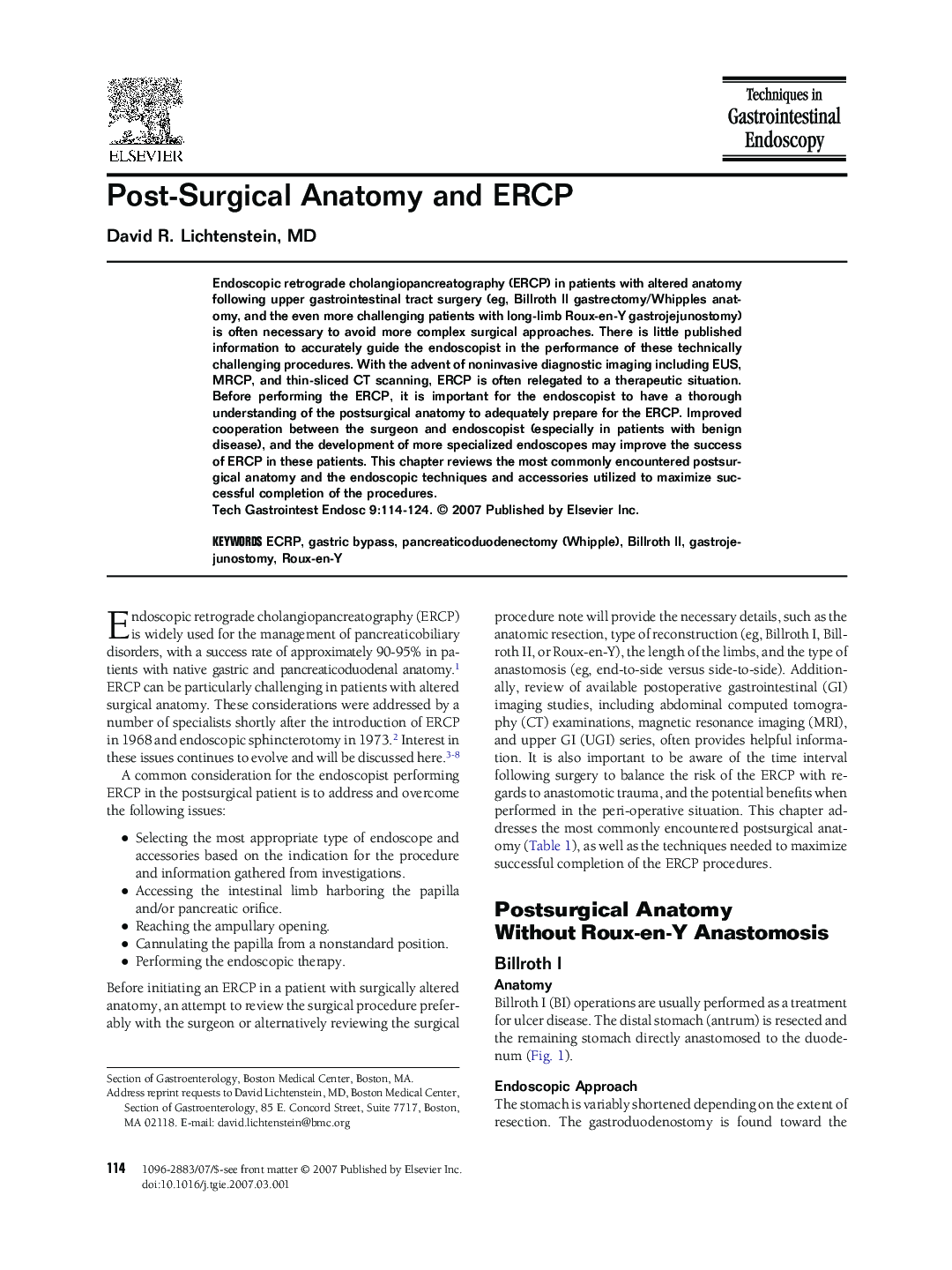| Article ID | Journal | Published Year | Pages | File Type |
|---|---|---|---|---|
| 3322726 | Techniques in Gastrointestinal Endoscopy | 2007 | 11 Pages |
Endoscopic retrograde cholangiopancreatography (ERCP) in patients with altered anatomy following upper gastrointestinal tract surgery (eg, Billroth II gastrectomy/Whipples anatomy, and the even more challenging patients with long-limb Roux-en-Y gastrojejunostomy) is often necessary to avoid more complex surgical approaches. There is little published information to accurately guide the endoscopist in the performance of these technically challenging procedures. With the advent of noninvasive diagnostic imaging including EUS, MRCP, and thin-sliced CT scanning, ERCP is often relegated to a therapeutic situation. Before performing the ERCP, it is important for the endoscopist to have a thorough understanding of the postsurgical anatomy to adequately prepare for the ERCP. Improved cooperation between the surgeon and endoscopist (especially in patients with benign disease), and the development of more specialized endoscopes may improve the success of ERCP in these patients. This chapter reviews the most commonly encountered postsurgical anatomy and the endoscopic techniques and accessories utilized to maximize successful completion of the procedures.
